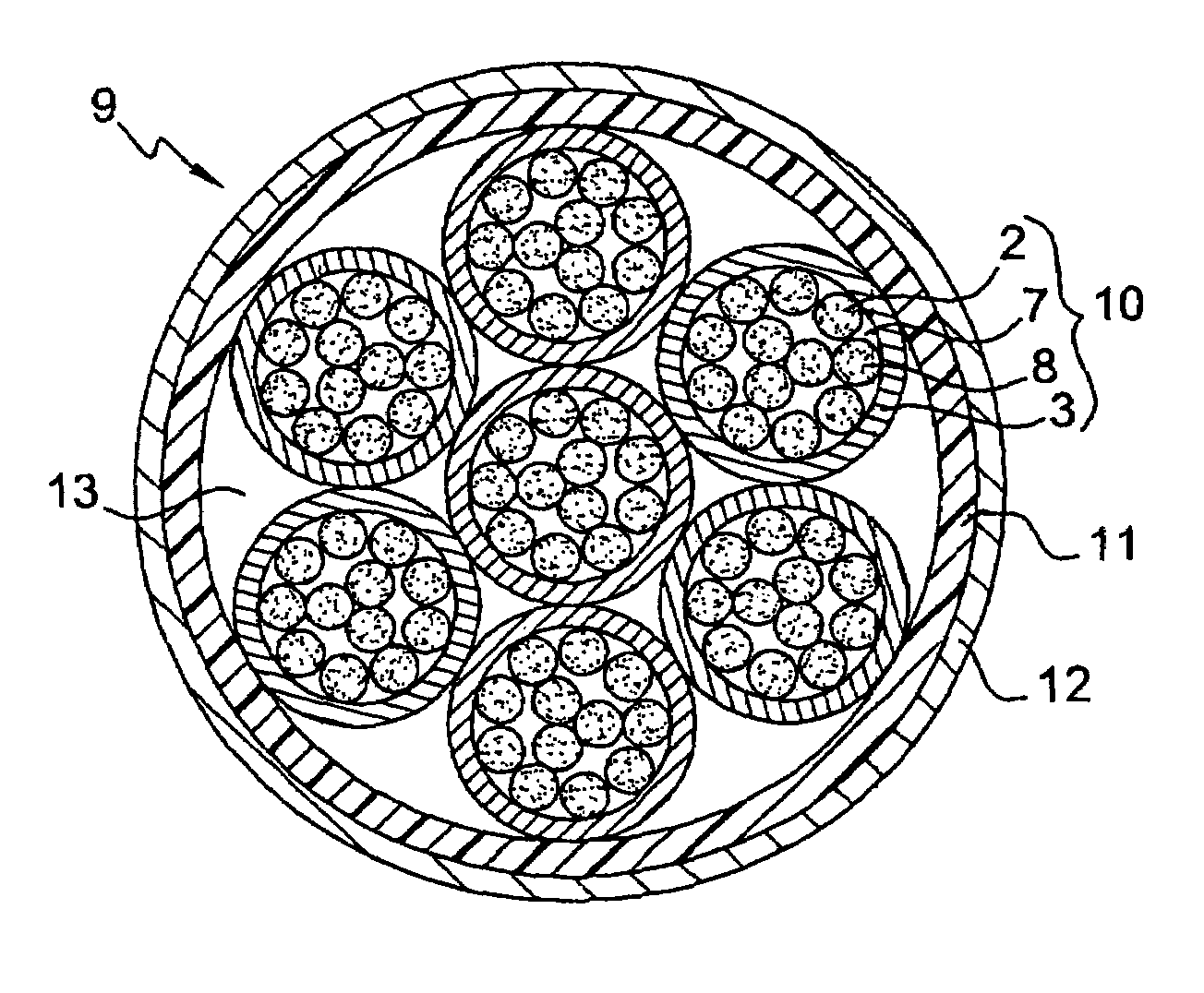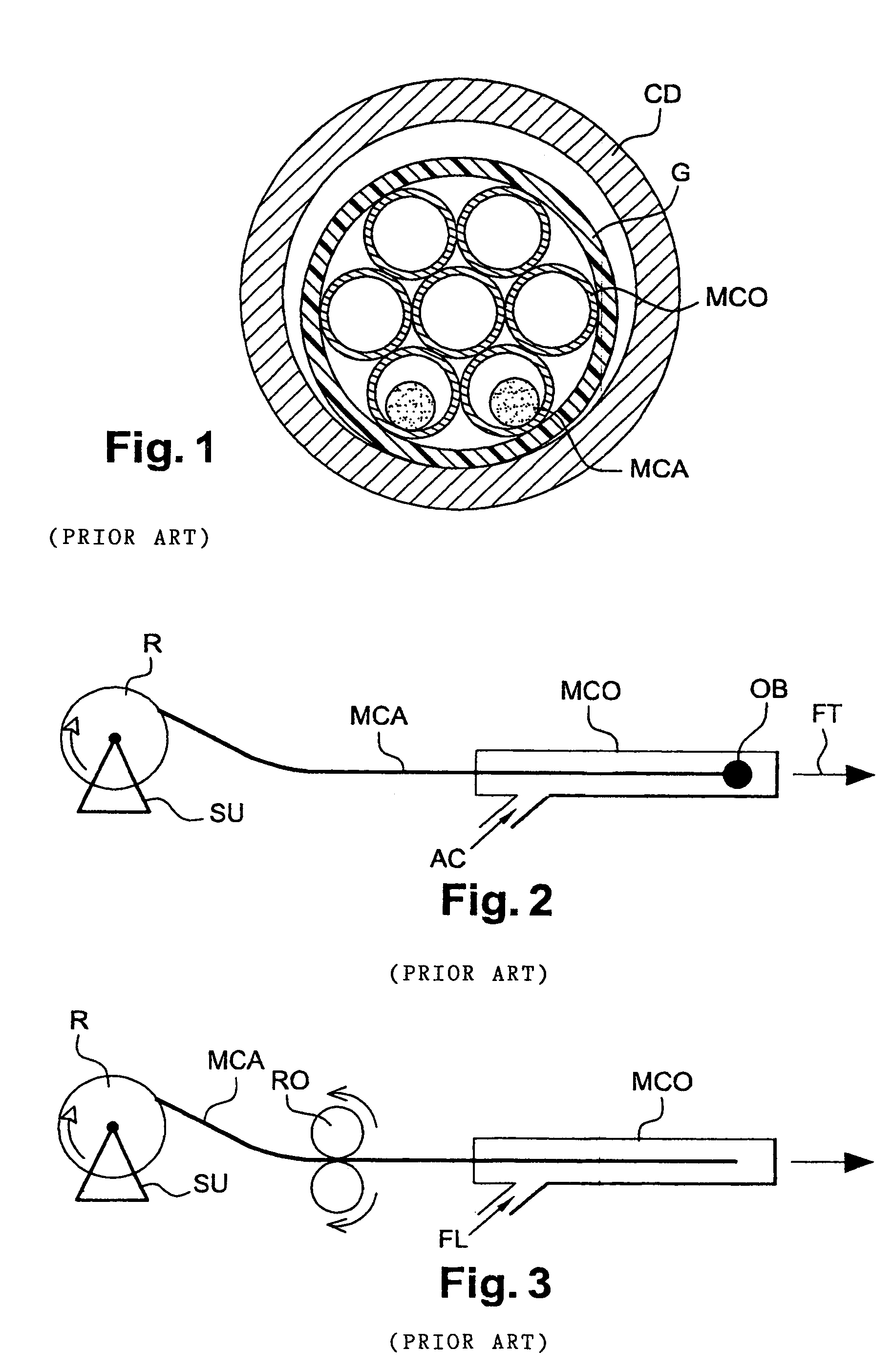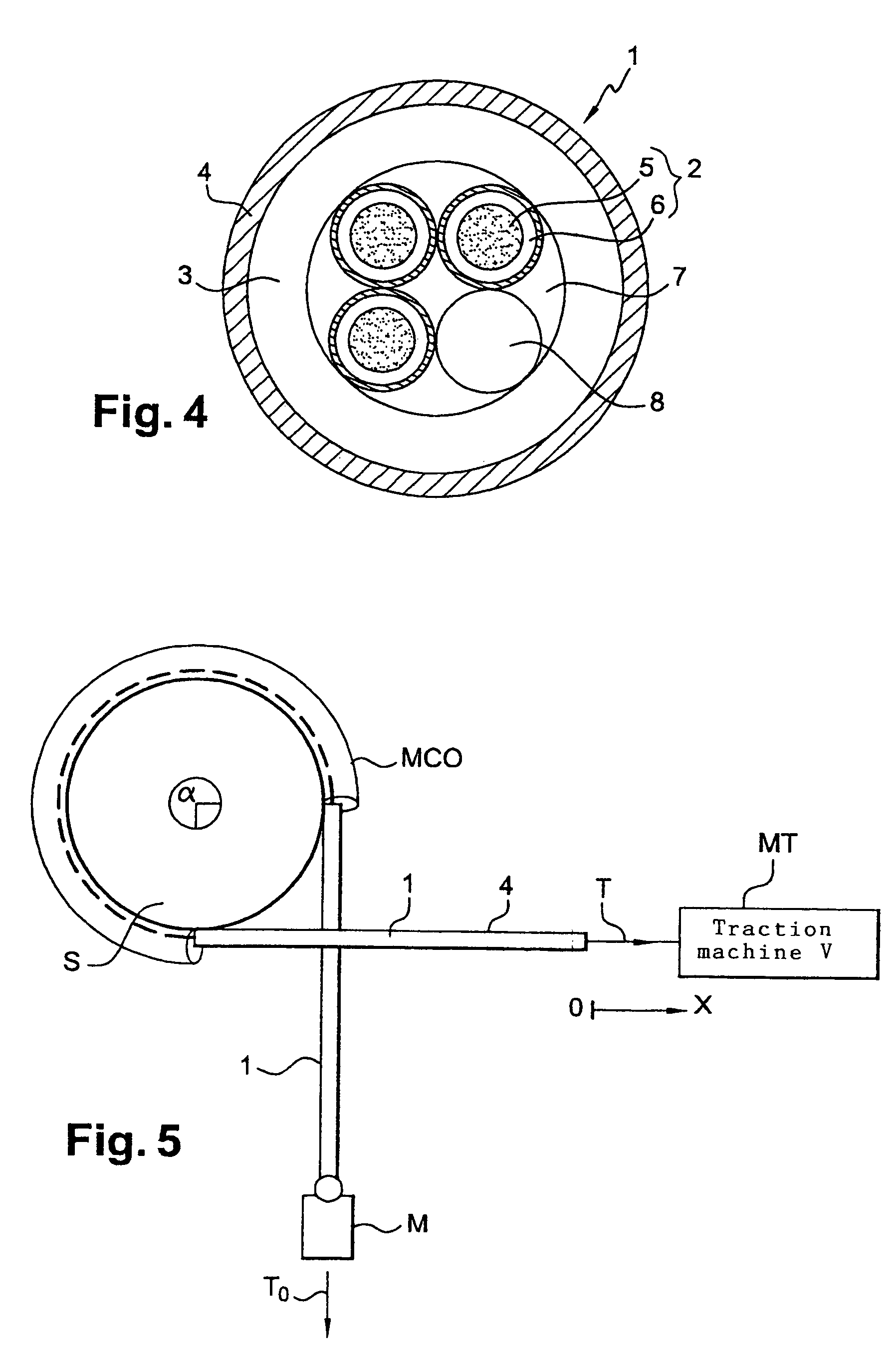Optical fiber cable with retaining sheath
a technology sheaths, which is applied in the direction of optics, fibre mechanical structures, instruments, etc., can solve the problems of micro-cables or mini-cables buckling, and achieve the effects of reducing the coefficient of friction of cables, increasing the stiffness of optical fiber telecommunications cables, and facilitating linear retention of cables
- Summary
- Abstract
- Description
- Claims
- Application Information
AI Technical Summary
Benefits of technology
Problems solved by technology
Method used
Image
Examples
second embodiment
[0069]In the invention, a telecommunication cable constitutes an optical fiber minicable 9 analogous to a supermodule as disclosed in International Patent Application No. WO 02 / 31568, but with an external layer conforming to the invention. The minicable 9 comprises a plurality of optical fiber modules 10, for example seven such modules, as shown in FIG. 9, and more generally at least two optical fiber modules 10. The relatively low number of modules 10 in the minicable 9 means that the modules can easily be distinguished from each other.
[0070]Each optical fiber module 10 constitutes a microcable analogous to that shown in FIG. 4, but with no external layer 4. Thus each module 10 comprises a plurality of optical fibers 2 each having a silica core 5 covered with a colored identification layer 6 and a “microsheath” type retaining sheath 3 that has low thickness, that is easy to tear and that is mechanically coupled to all of the optical fibers that it contains in order to clamp them. A...
first embodiment
[0071]As in the first embodiment, shown in FIG. 4, a module 10 may contain a filling material 7 used as a sealing product and one or more mechanical reinforcing fibers 8, for example two reinforcing fibers per ten optical fibers per module. The filling material 7 fills all of the space between the optical fibers 2 and the mechanical reinforcing fibers 8, if any, in the retaining sheath 4.
[0072]In an analogous manner to the mechanical coupling and to the composition of the optical fibers 2 in a microcable 1 or a module 10, the minicable 9 comprises a retaining sheath 11 surrounding all the modules 10 contained in the minicable so as to group them together and hold them together. The retaining sheath 11 is in contact with the retaining sheaths 3 of the modules 10 that are on the outside of the minicable and is mechanically coupled to the retaining sheaths 3 of the modules 10 to clamp them. The mechanical coupling between the retaining sheaths 3 and the retaining sheath 11 must be of t...
PUM
 Login to View More
Login to View More Abstract
Description
Claims
Application Information
 Login to View More
Login to View More - R&D
- Intellectual Property
- Life Sciences
- Materials
- Tech Scout
- Unparalleled Data Quality
- Higher Quality Content
- 60% Fewer Hallucinations
Browse by: Latest US Patents, China's latest patents, Technical Efficacy Thesaurus, Application Domain, Technology Topic, Popular Technical Reports.
© 2025 PatSnap. All rights reserved.Legal|Privacy policy|Modern Slavery Act Transparency Statement|Sitemap|About US| Contact US: help@patsnap.com



